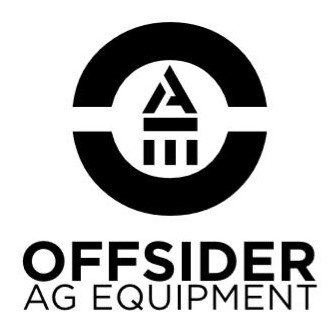Orphan lambs and how to care for them
Poddy lamb season is here again! Raising orphaned lambs can be both a rewarding and challenging experience. While it’s heartwarming to see them thrive, it can also be heartbreaking when things don’t go as planned. To give your lambs the best possible start, follow these essential tips:
1. Warmth and Drying
If you find a lamb that is cold or wet, your first priority should be to warm and dry them as quickly as possible. Newborn lambs lose heat rapidly and can become hypothermic, depleting their energy reserves in no time.
To begin feeding, first check whether the lamb has a sucking reflex by putting your (washed) finger in their mouth. Their tongue should be warm and they may begin to suck. If their mouth is cold, make sure they are still nice and warm.
Feed with care if they are struggling to suck on the teat to avoid complications. Do not attempt to feed if they cannot swallow or are unresponsive or very cold. Force feeding could cause liquid to drip down into their lungs. This can cause infection, pneumonia or cause pulmonary aspiration, which can ultimately lead to the lamb dying.
2. The Importance of Colostrum
Colostrum—the first milk produced by the ewe—is rich in nutrients and antibodies that help build a lamb’s immune system. Ideally, lambs should receive colostrum within their first few hours of life. If fresh colostrum isn’t available, frozen colostrum from a healthy ewe (stored for up to 12 months) is a good alternative. When that’s not an option, a high-quality powdered colostrum, such as the one available at our clinic, is the next best thing.
⚠️ Avoid homemade substitutes containing egg. Not only is it illegal to feed livestock animal products like eggs, blood, or meat, but these mixtures also lack antibodies and are poorly digested by lambs.
3. Bottle Feeding Basics
A standard baby bottle or soft drink bottle with a lamb teat works well for feeding, provided it’s thoroughly cleaned before each use. Check that the teat hole is appropriately sized—too large a hole can cause milk to flow too quickly, increasing the risk of digestive issues.
4. Housing and Hygiene
Lambs need a warm, dry, and sheltered space with easy-to-clean bedding such as straw or newspaper. Good hygiene is critical in preventing infections and illness.
Using nappies is an excellent way to keep both your lambs and your home clean. Most lambs start in a size up from newborn nappies for the best fit.
To accommodate their tails, you can either cut a hole in the nappy and pull the tail through or simply position the tail to hang outside. This helps prevent soiling and keeps your lamb more comfortable.
Lambs are notorious for kicking their nappies off! To keep them in place, try repurposing an old pair of stockings—cut them into little pants that fit snugly over the nappy to hold it secure. This simple trick can save a lot of cleanup and keep your lamb happy.
Don’t forget that ram lambs urinate from the middle of the underside of thier torso. The nappies need to be big enough to reach!
5. Choosing the Right Milk Replacer
For best results, use a lamb milk replacer with a composition of 30% fat, 23% protein, and 23% lactose, mixed precisely according to the manufacturer’s instructions. Proper mixing ensures that the milk forms a curd in the lamb’s stomach, which aids digestion.
💡 Avoid calf milk replacer—it contains too much lactose and can cause digestive upset. Some people have had success using human-grade powdered milk, but lamb milk replacer is always the safest option.
6. Feeding Guidelines
Follow the feeding schedule on the milk replacer bag for quantity and frequency. For the first week, milk should always be fed at body temperature. After three weeks, slightly cooler milk may help reduce the risk of bloat.
When the lambs are small, little and often is the best way to make sure they are getting all they need.
Feed every 2-3 hours for the first two weeks of life (the night feeds can be stretched to 4 or 5 hours) and then every 4 hours for the next few weeks, depending on how well they are doing. Divide up the total recommended milk amount per day and aim to match your feeds to this total.
7. Introducing Solid Food and Water
By the end of the first week, make sure your lamb has access to fresh water, lamb weaning pellets, hay, or grass to support rumen development.
8. Preventing Bloat
Bloat is a common and serious issue in poddy lambs, caused by bacterial overgrowth in the abomasum (the fourth stomach). Key risk factors include:
✅ Overfeeding, particularly with warm milk
✅ Milk flowing too fast from the bottle
✅ Incorrectly mixed or inappropriate milk formula
✅ Poor hygiene
💡 To help prevent bloat, consider adding one tablespoon of acidophilus yogurt per 500ml of milk and feeding the milk at room temperature or cooler.
9. Vaccination and Marking
Lambs should receive their first vaccination at 6-8 weeks of age, with a booster 4 weeks later. Marking (tail docking and castration, if needed) is best done at the time of the second vaccination.
10. When to Seek Veterinary Advice
Contact a vet if your lamb displays any of the following symptoms:
🚩 Painful, swollen joints
🚩 Diarrhoea
🚩 Bloated or distended stomach
🚩 Lethargy or dullness
By following these guidelines, you’ll give your poddy lambs the best chance at a healthy and happy start in life. If you need further advice, don’t hesitate to reach out to your vet.
